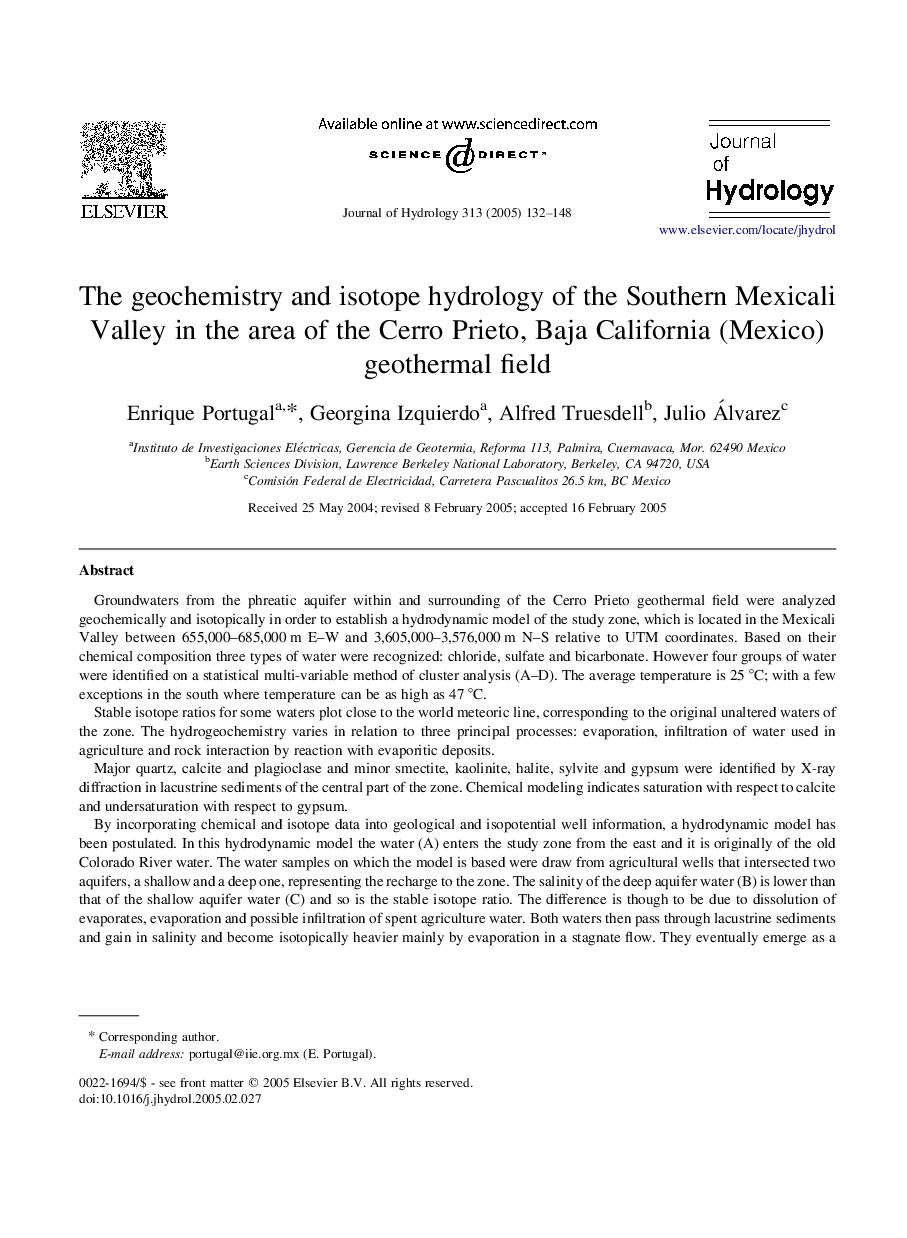| Article ID | Journal | Published Year | Pages | File Type |
|---|---|---|---|---|
| 9491257 | Journal of Hydrology | 2005 | 17 Pages |
Abstract
By incorporating chemical and isotope data into geological and isopotential well information, a hydrodynamic model has been postulated. In this hydrodynamic model the water (A) enters the study zone from the east and it is originally of the old Colorado River water. The water samples on which the model is based were draw from agricultural wells that intersected two aquifers, a shallow and a deep one, representing the recharge to the zone. The salinity of the deep aquifer water (B) is lower than that of the shallow aquifer water (C) and so is the stable isotope ratio. The difference is though to be due to dissolution of evaporates, evaporation and possible infiltration of spent agriculture water. Both waters then pass through lacustrine sediments and gain in salinity and become isotopically heavier mainly by evaporation in a stagnate flow. They eventually emerge as a saline water (D) in the central part of the study zone. This saline water is the one that mixes with thermal fluid discharges from the geothermal reservoir in the south.
Related Topics
Physical Sciences and Engineering
Earth and Planetary Sciences
Earth-Surface Processes
Authors
Enrique Portugal, Georgina Izquierdo, Alfred Truesdell, Julio Álvarez,
